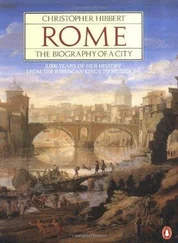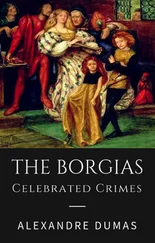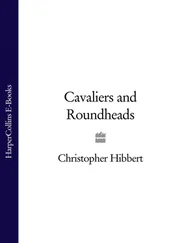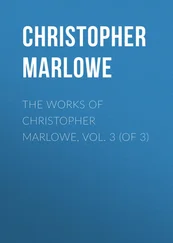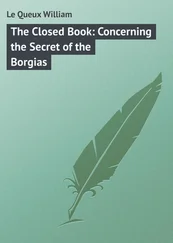He made urgent enquiries in the area where Juan was known to have been the night before. One of those questioned was a timber merchant whose practice it was to have his wood unloaded from boats in the Tiber not far from the hospital of San Girolamo degli Schiavoni. This man said that he had been keeping a watch on a delivery of timber when, close to midnight, he saw two men walk down to the riverbank, where they looked about them, presumably to see if the coast was clear. Shortly afterward two other men stealthily approached the water, where they were joined by a man on a white horse, which appeared to have a corpse slung across its back. He and the four other men then moved silently along the riverbank, halting just past a place where sewage and rubbish were customarily thrown into the water.
Here the dead body was pulled from the horse and hurled into the Tiber. The rider who had brought it then asked the others if it had sunk. He was assured that it had; but, noticing the corpse’s cloak still floating on the surface, he threw stones at it until it had disappeared from view. The five men then left the river together and were soon lost to sight.
All this the timber merchant related when questioned. Asked why he had not reported these events earlier, he replied that he must have seen at least a hundred bodies thrown into the river at that point and had never thought much about it.
Fishermen and boatmen were now called up and ordered to drag the riverbed. They soon found Juan’s body. It was fully dressed, with a purse tucked into a belt, which still contained 30 ducats. He had been stabbed repeatedly in his body, legs, and head.
The corpse was then taken to Castel Sant’Angelo, where it was stripped, washed, and dressed in military uniform before being taken to the Church of Santa Maria del Popolo in a procession led by over one hundred torchbearers, ecclesiastics, and members of the dead man’s household, all, so Burchard related, ‘marching along, weeping and wailing and in considerable disorder.’
Alexander VI was distraught, ‘shutting himself away in a room in grief and anguish of heart, weeping most bitterly… From the Wednesday evening until the following Saturday morning, he ate and drank nothing, whilst from Thursday morning to Sunday, he was quiet for no minute of any hour.’
On the Monday, June 19, the pope made a solemn announcement at a special consistory called for that morning:
The Duke of Gandía is dead. A greater calamity could not have befallen us for we bore him unbounded affection. Life has lost all interest for us. It must be that God punishes us for our sins, for the Duke has done nothing to deserve so terrible a fate.
WHEN HE HAD RECOVERED from the first pangs of grief, the pope determined to reform the Curia, the papal government. ‘We are resolved without delay to think of the Church first and foremost, and not of ourselves nor of our privileges,’ he announced, adding that ‘we must begin by reforming ourselves.’ For years the Curia had been allowed to become lax and corrupt, manned by officials who were steadily enriching themselves at the Church’s expense. He established a reform commission that produced a highly critical report. His enthusiasm soon evaporated, however; and having ordered the arrest of one of his more self-serving officials, Bartolomeo Flores, the archbishop of Cosenza, Alexander VI quickly abandoned his proposed programme of reform and helped himself to much of the fortune that the archbishop had managed to accumulate.
Flores, deprived of his see, was taken from his dungeon to a cell in Castel Sant’Angelo, where he was required ‘to wear a gown of coarse white cloth and a heavy white cap, to sleep on a straw mattress, to be content with one cask of water and three loaves of bread a day, one jug of oil and a lamp, a breviary, a Bible and a copy of the Epistle of St Peter.’ He died in his damp cell soon after his incarceration there, and his body was taken to the Church of Santa Maria in Transpontina, and there buried ‘without any torches, mourners, church ceremony or service.’
Meanwhile, several men had been questioned about Juan’s murder. Alexander VI had sorely missed his favourite son while Juan had been in Spain and had called him back to Rome, appointed him to command the papal armies, unsuited though he was to such a challenge, and had given him what was considered the undemanding task of turning the troublesome Orsini family out of the castle at Bracciano.
Juan’s failure at Bracciano and his seduction of Sancia, Cesare’s mistress, had infuriated Cesare, fuelling his jealous dislike of Juan as the obvious favourite, though unworthy and conceited second son. Jofrè also had cause to feel affronted at Juan’s behaviour. Nor were the two brothers the only men suspected of Juan’s murder, for this was a man with many enemies, particularly among the Orsini and their allies.
A few weeks after the murder, on July 1, the Florentine envoy in Rome reported that since Alexander VI no longer showed much interest ‘as to the man guilty of the murder,’ it was ‘held to be certain beyond any doubt that His Holiness has now discovered the truth, and that he thinks of nothing but the way in which he may safely lay hands on the guilty men.’ And later that year, Manfredo Manfredi, the Mantuan ambassador, told the Duke of Ferrara: ‘It seems that, more than ever, the Pope gives signs of blaming the Orsini for the murder of his son; and it is believed that he is disposed to avenge it.’ At the same time, it was reported from Venice: ‘His Holiness intends to ruin the Orsini because they certainly caused the death of his son, the Duke of Gandía.’
Soon after these suspicions were voiced, it became generally accepted in Venice that Cesare, rather than the Orsini, was responsible for the murder. Sancia of Aragon seems to have suspected Cesare, and this was also common gossip in Spain, where both Queen Isabella and Maria Enriquez, Juan’s widow, were inclined to believe that the circulating stories of Cesare’s guilt were probably true.
As for Alexander VI’s opinion of the identity of the murderer of his son, the pope did not commit himself, but he did exculpate, for one reason or another, most of those upon whom suspicion had fallen. Among these were Giovanni Sforza and his uncle Ascanio Sforza, who was known to have quarrelled recently with the Duke of Gandía, and Guidobaldo da Montefeltro, the Duke of Urbino, who had fought with Juan against the Orsini but, after being taken prisoner, had been left to languish in prison until ransom was paid by his loyal subjects.
— CHAPTER 12 — Another Husband for Lucrezia
‘SHE WAS PREPARED TO… SUBMIT HERSELF TO THE EXAMINATION OF MIDWIVES’
LUCREZIA RECEIVED THE NEWS of her brother’s horrific murder in her rooms in the Dominican convent of San Sisto, a tranquil place situated on the Via Appia, opposite the Baths of Caracalla, surrounded by orchards and vineyards, and some distance from the centre of Rome. She had taken refuge here on June 4, ten days earlier; when, shortly after she arrived, papal guards came to conduct her to the Vatican, the abbess assured them that Lucrezia was staying in the convent at her own request and persuaded them to leave her in peace.
Her desire had been to escape the stories that were spreading like wildfire through the city to explain why she had been abandoned by her husband, Giovanni Sforza. One report mentioned that she had ‘left the palace and gone to a convent,’ adding ominously, ‘Some say she will turn nun, while others say many other things which one cannot entrust to a letter.’ Rumours of her incestuous relationships with her brothers and even her father, the pope, abounded; within days of the murder, Giovanni was suspected of committing the crime ‘because the Duke of Gandía had had commerce with his wife.’
Читать дальше




